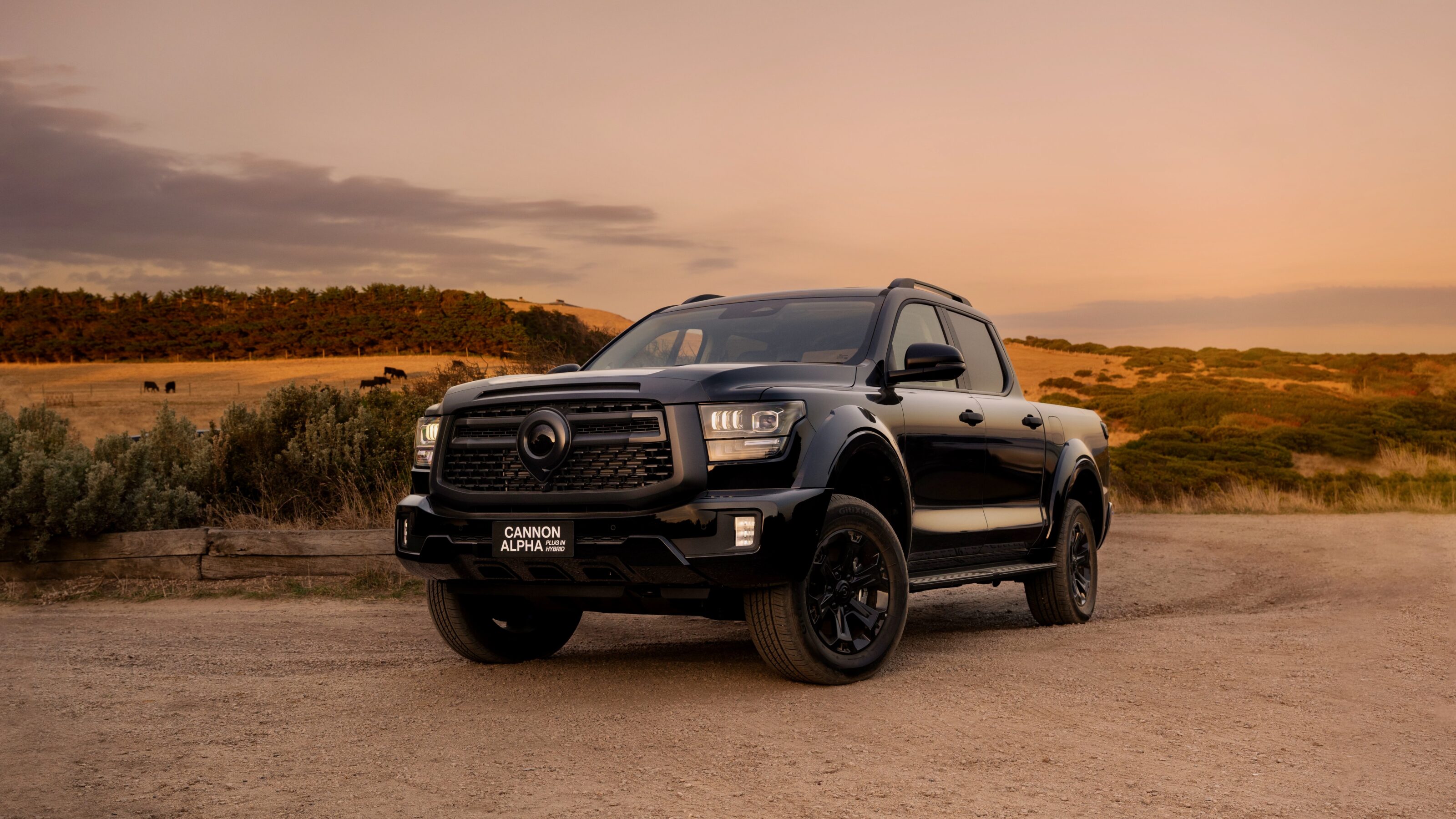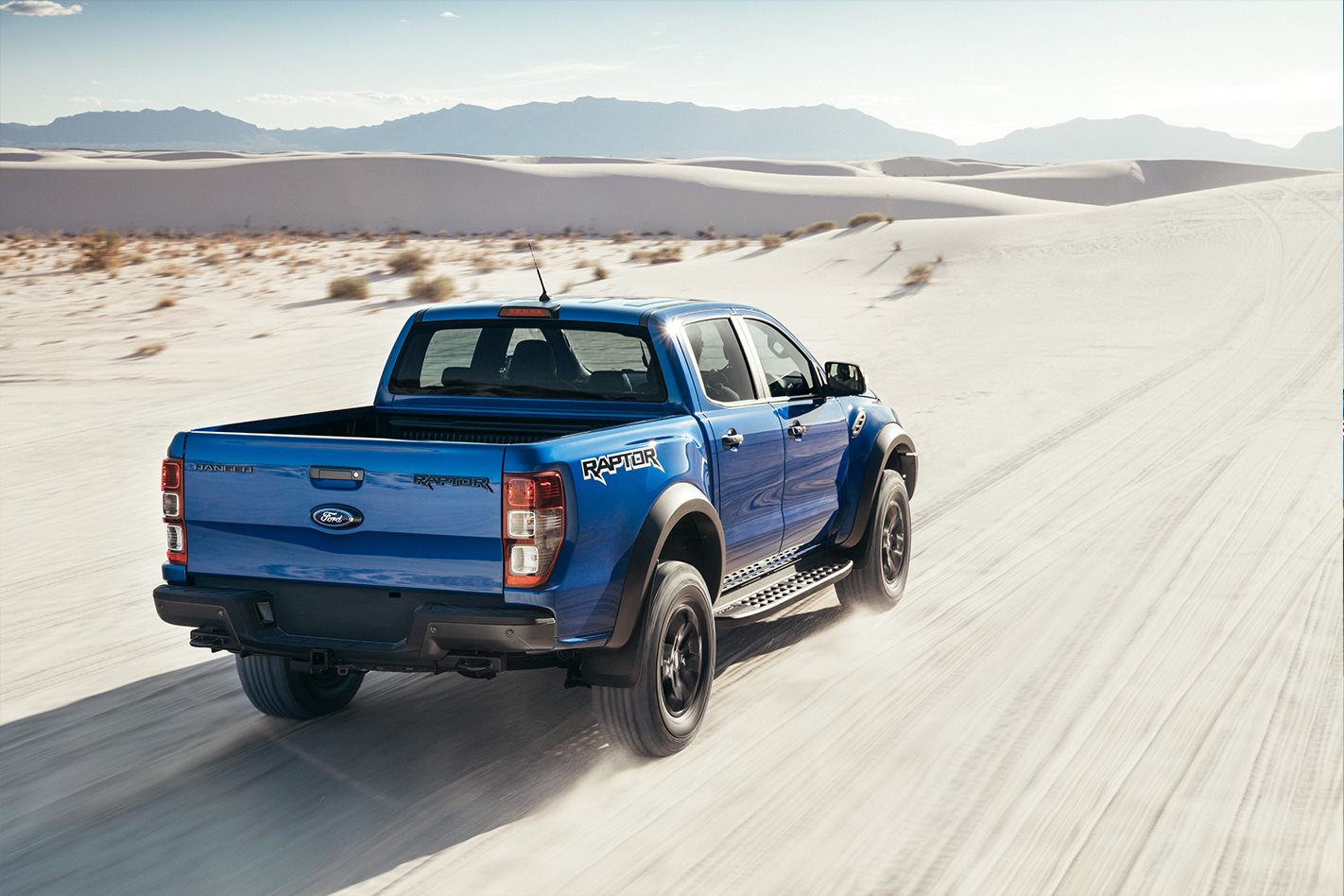
IF YOUR idea of off-roading is bumping along at 5km/h with a spotter walking in front, Ford’s Ranger Raptor is likely to come as a bit of a culture shock. “We’ve designed this vehicle to go up to 170km/h or thereabouts off road,” says Damien Ross, the Chief Program Engineer for the Raptor.
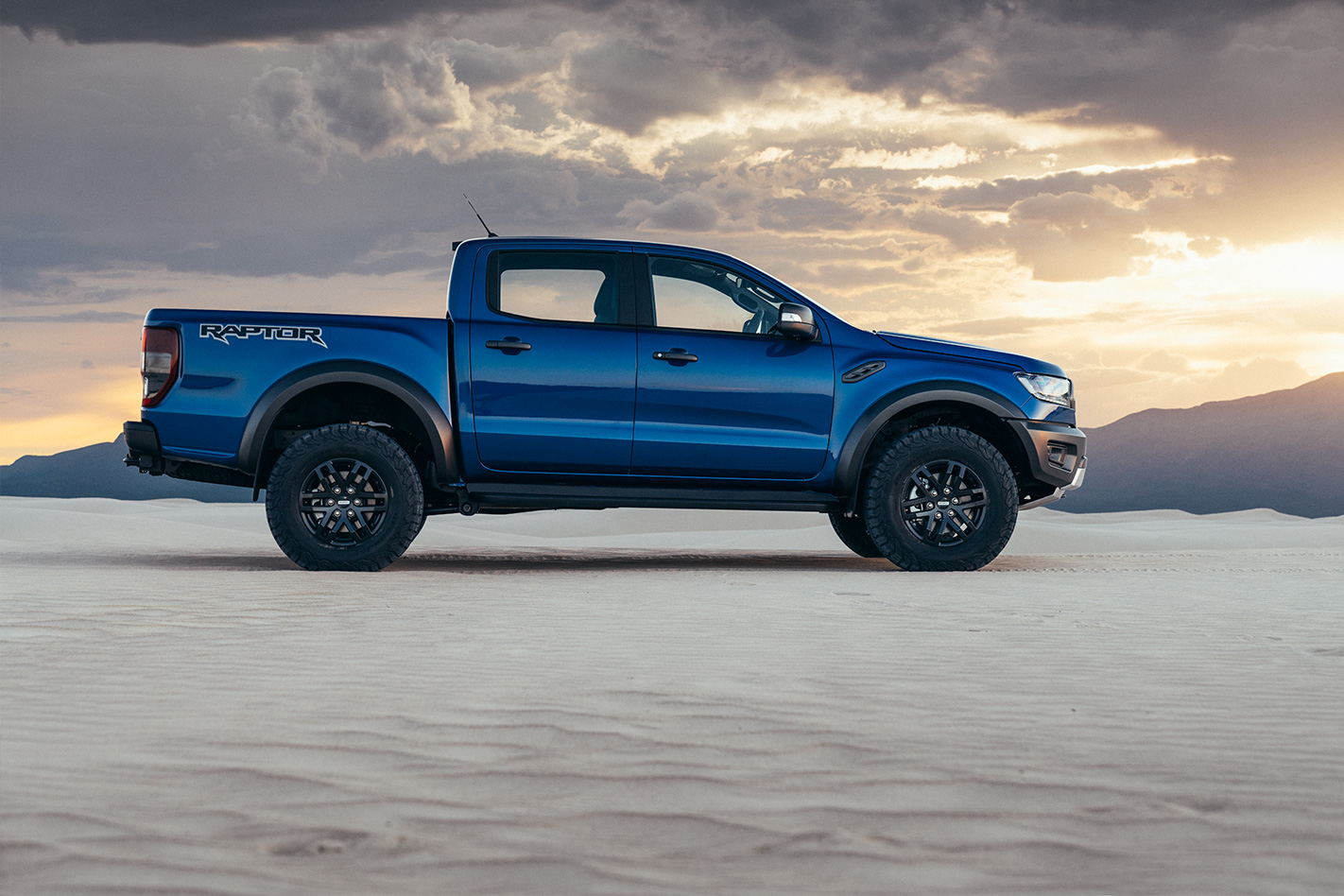
Taking that as a key design parameter for the Raptor, everything has been worked back from there: engine, suspension, brakes, and body have all had the essence of Dakar truck-style capability worked into them.
The arrival of the Ranger Raptor couldn’t have been better timed. Although there has been rumblings about tightening domestic tax loopholes that have undoubtedly boosted sales of dual-cab utes, manufacturers have realised that there’s headroom in this market for premium products. While most of the high-end models centre around equipment upgrades, nothing has been quite so fundamentally re-engineered for purpose as the Ranger Raptor.
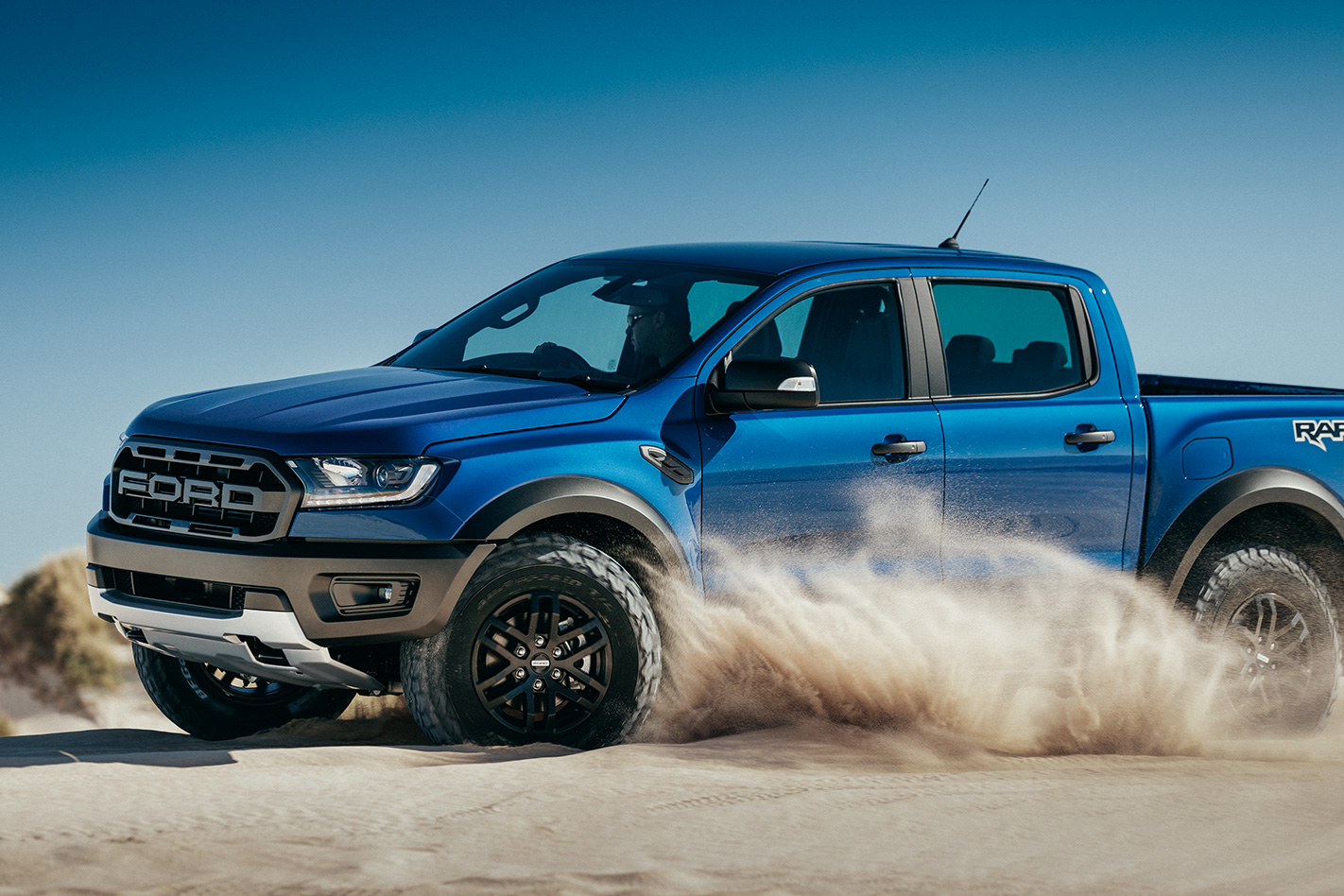
The suspension is markedly different to the leaf-sprung rear of the standard Ranger. “At the rear, we’ve redesigned the frame to take a Watts link suspension,” says Ross. “We’ve also added suspension A-arms to give us a wider track [by 150mm] and changed the height of the vehicle as well.” The added 56mm of ride height combines with a 32.5-degree approach angle, ramp-over and departure angles of 24 degrees, and the fitment of 23mm-thick steel bash plate to give the Raptor the ability to tackle almost any yump unscathed.
It’s far from a direct port of the Everest rear end, though. “Obviously the Everest has a Watts link suspension. To a certain extent, Watts link – like leaf springs – is a very basic set-up, but we’ve gone for outboard shocks, and then we’ve had to make sure everything has the strength,” he continues.
The Fox shocks are custom-tuned units tailored to the demands of high-speed off-road driving.“They’re the shocks that go into the American F-150, and [Fox] are our partner for this program too,” says Ross.
“They’re very capable shocks with bypass technology that allows us to create much more capability in damping [at] different vehicle speeds – different off-road speeds as well as on-road speeds.
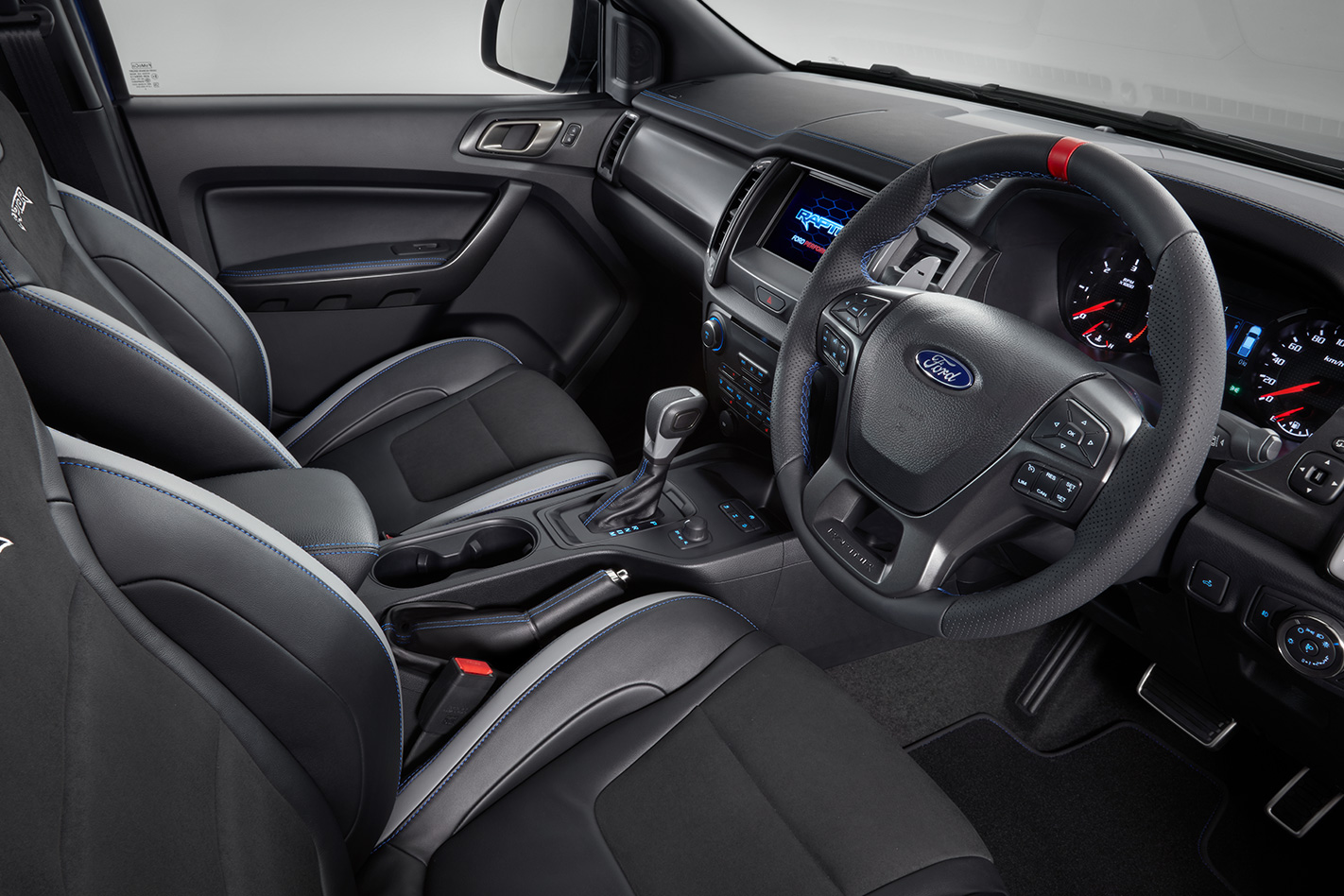
“You get a limousine-type ride on-road that we haven’t had before in our trucks.”
With 236mm of front suspension travel (an additional 32 percent over a Ranger Wildtrak) and a massive 290mm at the rear (22 percent more), there’s huge compliance. And the Fox shocks, with 46.6mm pistons and remote reservoirs, offer a stack of options to Ford’s chassis engineers.
The chassis has been strengthened with increased bracing and stiffness. High-strength steels have also been added to key points in the frame so it can better cope with high-speed off-road impacts. Ford reckons the Raptor’s side rails can now withstand an extra G of vertical impact.
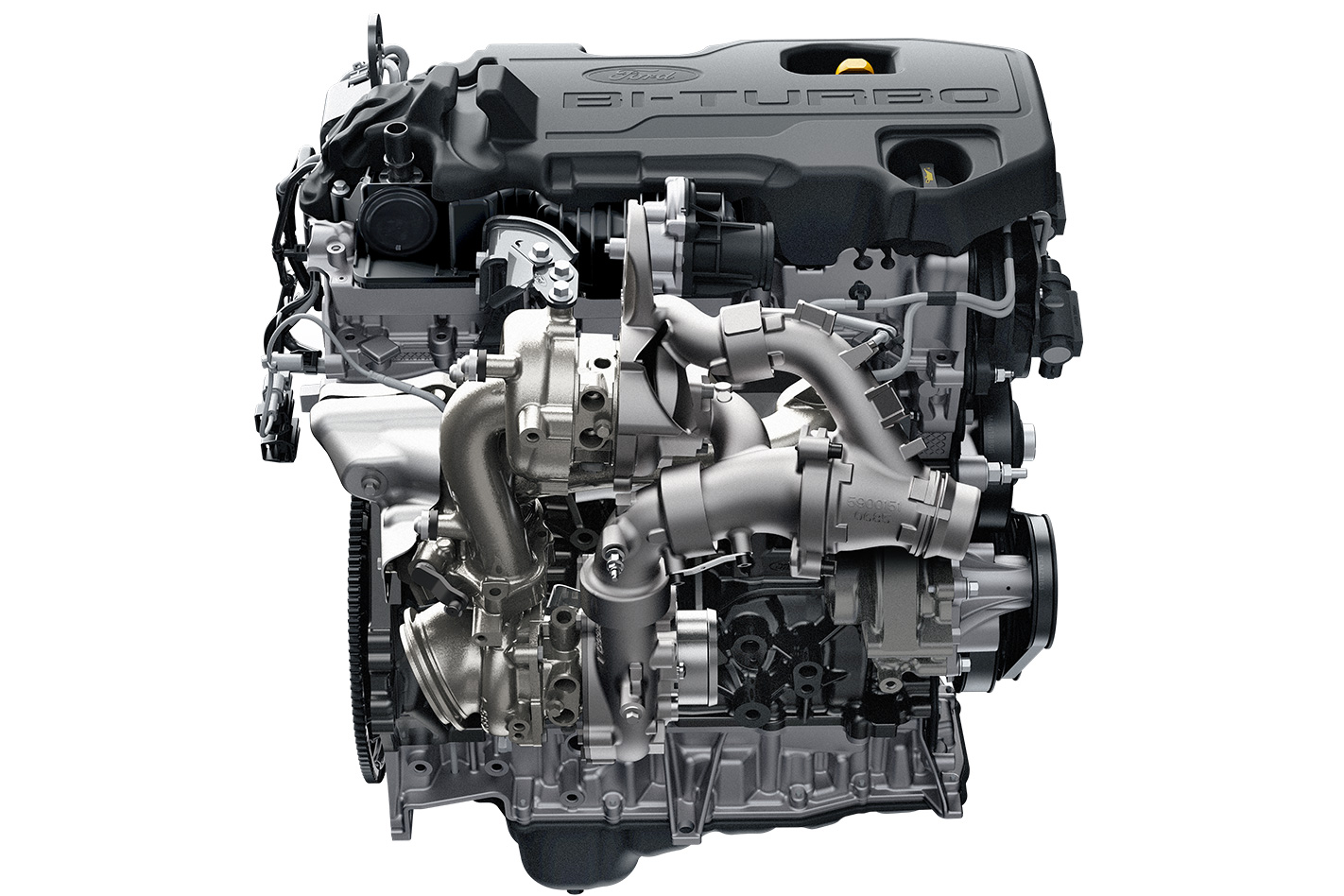
The vented disc brakes have also been upgraded to cope with the higher demands, with huge 332x32mm rotors up front and 332×24 rear discs replacing the stock Ranger’s drums. The transmission is Ford’s new 10-speed torque-converter automatic that’s been calibrated for the Raptor, dialling into the torque characteristics of the biturbo diesel for fast launch capability. Huge 285/70R17 BF Goodrich All Terrain TA Comp tyres are complemented by a specially reinforced spare tyre mounting point.
“Obviously we’ve optimised all the shift patterns for on-road. With the Terrain Mode Management system, you can select Baja mode which modifies the braking and traction-control systems, and also [allows] a little bit of oversteer. It gives a more fun element for the enthusiast. It also marries in a different shift schedule with the transmission that helps you get a more aggressive response.”
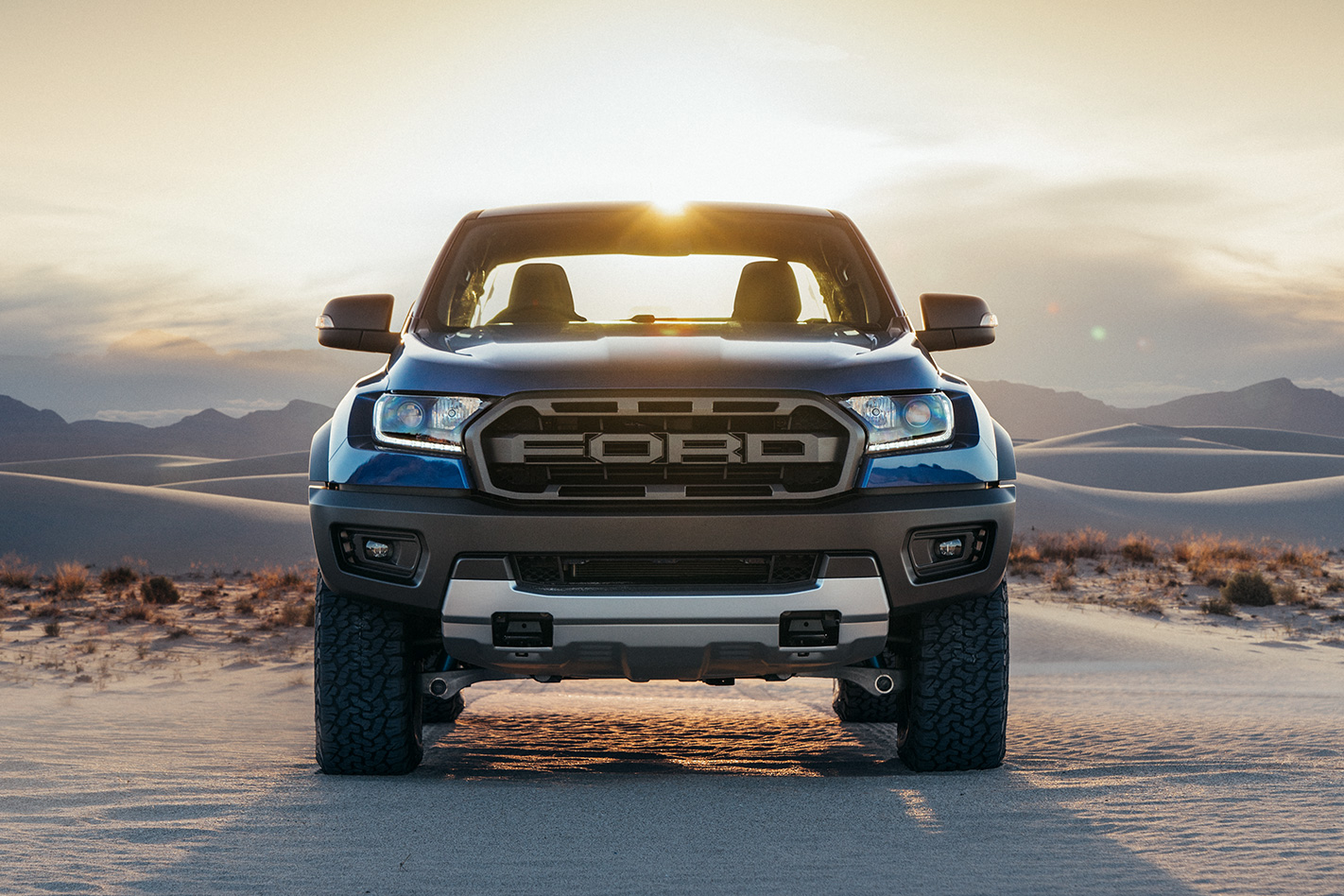
As well as Baja mode, the Terrain Management System also offers Grass/Gravel/Snow mode, a Mud/Sand setting and Rock mode.
The first Ford Performance product developed in the Asia Pacific region, Australia has been the engineering home for the Ranger Raptor’s development program. “The Raptor’s been all around Australia and we know Australia is one of the toughest places in the world. We’ve also tested it in the US in the same desert that the F-150 goes over as well as our normal test locations in North America and Europe,” says Ross.
“If we cover off Australia, it gives us confidence that we’ve covered off most other locations.”



